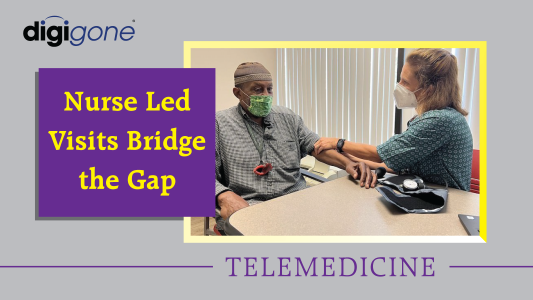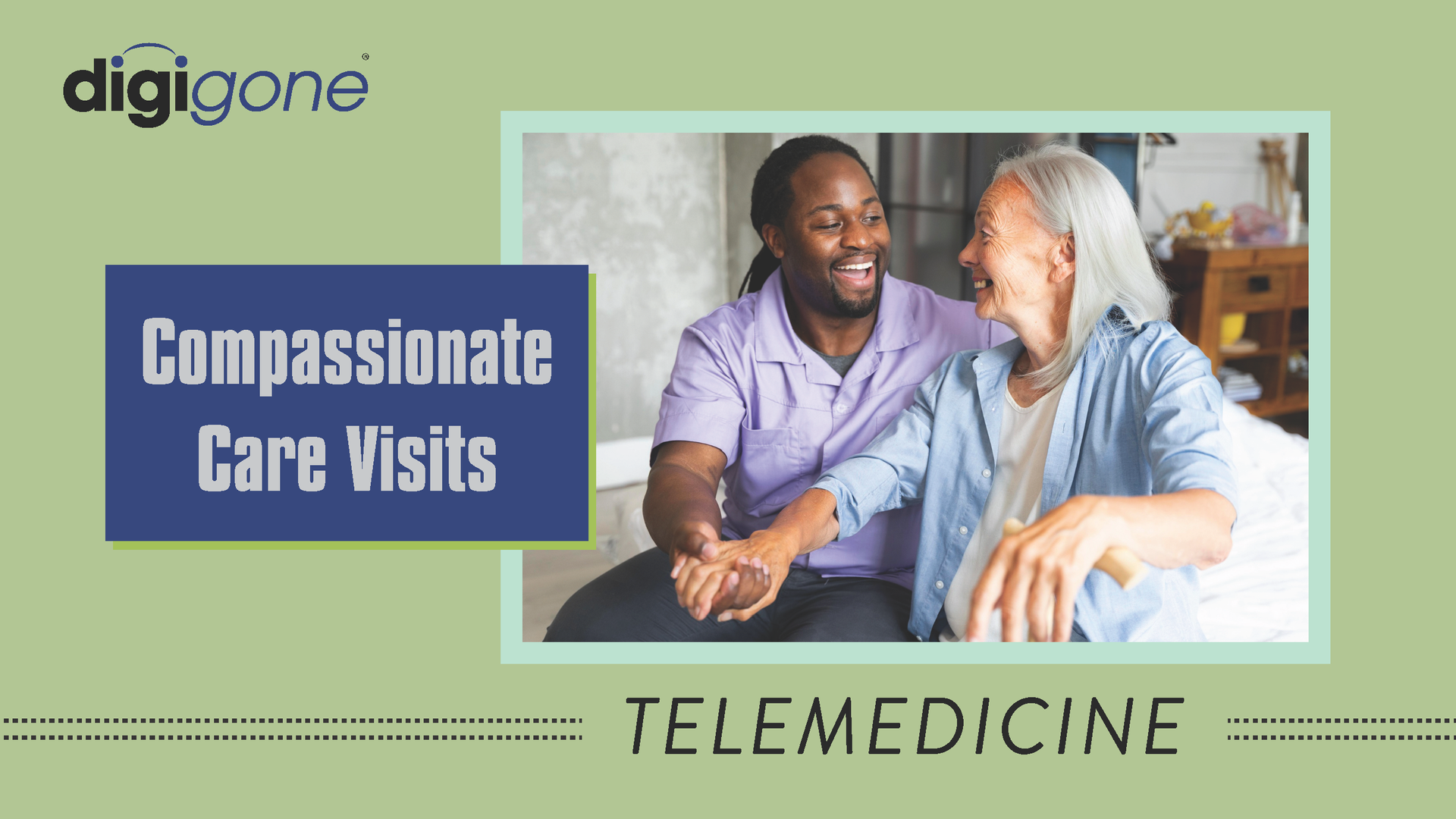A Guide to Telemedicine Funding and Grants
DigiGone • May 26, 2020

A Guide to Telemedicine Funding and Grants
One clear impact of the COVID-19 pandemic is robust adoption of telemedicine. Virtual care is simply safer for everyone and it increases accessibility to care. Perhaps most importantly, it frees up space in hospitals and at doctors’ offices for those who urgently need it.
A report
by Global Market Insights predicts the telemedicine market is set to be valued at $175.5 billion by 2026, an almost 20% growth.
Entities across the country are seeking ways to prop up our telemedicine infrastructure to provide enhanced and continuous care to patients. If you’re in the healthcare industry and need funding to expand the care you provide, now is a great time to research options.
Here’s a guide to get you started:
Prior to Your Search
• Plan, then apply. Make sure you have a fully vetted business plan prior to applying for funds. Why is their money best spent in your hands? Have a thorough and detailed response for that question.
• Gather data
on the specific population you’ll serve. If you’re a medical provider at a regional hospital that has patients in remote areas, use data to substantiate their need. Or if you’re a non-profit that wants to provide mobile care to underserved, at-risk populations or veterans, there’s certainly statistics to validate the help you can give.
Current Funding Programs
The CARES Act
In response to the COVID-19 pandemic, on April 2, 2020 the Federal Communications Commission (FCC) earmarked $200 million in funding
to support America’s telehealth network, ensuring that safe and secure healthcare is accessible to everyone.
Here are a few important details:
• This is not a grant program. Rather, eligible healthcare providers that are approved are required to submit invoicing and documentation to receive reimbursements for eligible expenses and costs.
• There’s no deadline. But, funding decisions will be made on a rolling basis and the FCC will continue to accept and review applications until the funds are exhausted or the pandemic has ended.
• Funds are only available for nonprofits and public eligible healthcare providers. This includes:
o Post-secondary educational institutions offering health care instruction, teaching hospitals and medical schools
o Community and migrant health centers
o Local health departments or agencies
o Community mental health centers
o Not-for-profit hospitals
o Rural health clinics
o Skilled nursing facilities
o Consortia of health care providers consisting of one or more entities failing into the first seven categories
o Temporary and mobile health care providers are considered eligible.
How much money are entities eligible to receive?
The FCC states on their FAQ site
they do not anticipate awarding more than $1 million to a single applicant, either through one application or across several.
To learn more and submit an application, visit fcc.gov/covid19telehealth.
Distance Learning and Telemedicine Grant (USDA)
This $25 million is a part of the $200 million of the CARES Act, but is earmarked specifically for rural communities. Applications are being accepted through July 13, 2020. The difference with this grant is that for-profit businesses can apply.
Who can apply?
Most state and local government entities can apply and federally recognized tribes can apply. As well, non-profits, for-profit business and a “consortial of eligible entities.”
What can it be used for?
• Internet connectivity
• Audio, video and interactive equipment
• Terminal and data terminal equipment.
• Computer hardware, network components and software
• To purchase instructional programming that is a capital asset.
• Acquisition of technical assistance and instructions for using the equipment.
Are there any requirements?
Yes, a 15% match is required for grant awards.
Telehealth Network Grant Program
(Federal Office of Rural Health Policy)
Per the Health Resource and Service Administration website, this grant
is aimed at promoting “Tele-emergency services with an emphasis on tele-stroke, tele-behavioral health, and Tele-Emergency Medical Services (Tele-EMS).”
Even though the services provided must be to rural areas, applicants can be located in either urban or rural areas. Faith-based, community-based and tribal organizations are also eligible.
For more information, visit this site: https://www.hrsa.gov/grants/find-funding/hrsa-20-036
Community Foundations
Research organizations or foundations whose visions align with yours.
Whether it be indigenous populations, a remote community, an underserved urban community or those dealing with mental health issues in isolation, reach out to groups who are champions of your cause in your area. See if they have a foundation set up as part of their mission.
For instance, the Arkansas Community Foundation recently awarded $1,000 mini-grants to more than 600 organizations to support urgent community needs, including healthcare.
Simón Bolívar Foundation Inc, the non-profit private foundation of CITGO Petroleum Corp., has awarded over $250,000 in grants to ten non-profits working on health-focused outreach in Venezuela.
The Golisano Foundation awarded over $400,000 to organizations who serve people with disabilities.
These might not apply directly to your mission, but it illustrates the point that there are organizations that seek ways to help you help communities.
Do research relevant to your area and area of specializations.
Also, it never hurts to approach a local foundation with your needs. Just have all your ducks in a row before you do so.
University Foundations and Grants
Large non-profits and research institutions employ research specialists and grant writers to secure funding, and perhaps your well isn’t that deep. It’s OK, though. Search websites of local universities in your area. Some may have funding earmarked for entities that seek to provide healthcare for local populations. For example, the University of California-Davis
has partnered
with a pediatric telepsychiatry program that serves children in rural and underserved communities. And The Duke Endowment
awards grants for Child and Family Well-Being.
We’re not promoting these two grants, rather highlighting them to illustrate that funds are available. It just takes a bit of digging.
Finally, there’s a bevy of information and services on the FCC’s recently launched Keep Americans Connected
site, including a Health Care Connect Fund
for rural communities.
If you’re in a position to deliver healthcare via telemedicine and need to secure funding to bring it to full fruition, now is a good time to start the process.
The body content of your post goes here. To edit this text, click on it and delete this default text and start typing your own or paste your own from a different source.

Telemedicine kits are becoming indispensable tools for home healthcare providers, particularly during transition care medical examinations (TCMs). While the initial TCM is conducted by a physician who generates revenue from the service, the telemedicine kit significantly benefits home healthcare providers by expediting patient registration for their care services. With a nurse or medical assistant deploying the kit, patients can be quickly evaluated and connected with a physician, ensuring all necessary documentation and approvals are completed more efficiently. This faster onboarding process allows home healthcare providers to register more patients in less time, helping them deliver care sooner and grow their services efficiently. The ability to “bring the doctor” to the patient through a telemedicine kit is invaluable in initiating care seamlessly. Once patients are on board, home healthcare providers can continue leveraging telemedicine technology to improve how they deliver services. The kits enable nurses and medical assistants to perform follow-up visits, diagnostics, and real-time consultations without requiring patients to leave their homes. This capability allows providers to optimize their schedules and visit more patients daily, all while maintaining a high standard of care. The efficiency gained means better coverage, smarter use of resources, and happier patients. Beyond efficiency, telemedicine kits help providers build stronger connections with their patients by making care more accessible and personalized. Providers can quickly respond to emerging health concerns, adjust care plans, and ensure ongoing monitoring—all from the patient’s home. This not only leads to better patient outcomes but also boosts the provider’s reputation for being reliable and innovative. By facilitating the registration of more patients and enhancing care once they are onboarded, telemedicine kits are powerful tools that enable home healthcare providers to expand their reach, improve operational efficiency, and thrive in an increasingly competitive market. In a rapidly evolving healthcare landscape, telemedicine kits are revolutionizing how home healthcare providers deliver care, enabling faster patient onboarding, enhanced service delivery, and stronger connections with patients. By integrating this indispensable technology, providers can streamline operations, improve patient outcomes, and position themselves as leaders in care innovation. Don’t miss the opportunity to elevate your home healthcare services. Explore how telemedicine kits can help you expand your reach, optimize your resources, and deliver exceptional care. Contact us today to learn more and take the next step toward transforming your care delivery model.

With the new Safer Seas Act, vessel companies must comply with many new regulations by the end of the year. One of those requirements includes audio equipment placed outside of hallways leading to staterooms, which DigiGone can help with. And while this may seem burdensome, these new rules will be good for vessel companies in the long run.










